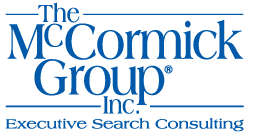Tracy Houston, President of Board Resources Services, LLC provides some tips on how to display executive presence during an interview.
I have observed both “bests and blunders” in many candidate interviews. Without fail, this high-level interview brings to light behavior under the influence of stress and reveals the haves and have-nots when it comes to executive presence. While executive presence is hard to define, we all know it when we see it. This “it” factor – the combination of confidence, poise and authenticity – convinces us that we are in the presence of the real deal. The directorship interview is a time when candidates ask how to ensure and increase executive presence. But how does that happen? The answer may be found, in part, from new research done by social psychologist Amy Cuddy that shows how “power posing” – standing in a posture of confidence, even when we don’t feel confident – can affect testosterone and cortisol levels in the brain, and might even have an impact on our chances for success. We all are aware that body language affects how others see us, but it may also change how we see ourselves.
A savvy board candidate can learn this secret and use “power posing” that boosts confidence just minutes before the interview. Below are a few power cue behaviors that show confidence and lead to a genuine executive presence during an interview for a board seat. The candidate:
- Sets the right tone when entering the room for the interview with straight-up, lead-with-the-heart posture.
- Knows how to pitch their voice to project leadership that speaks of a grounded sense of earned authority.
- Uses an occasional pause with a natural ease to add emphasis and let the interviewers consider their comments.
- Uses a sophisticated level of eye contact with a 30-second hold and watches for triggers that both gain and lose the focus of others during the interview.
- Makes sure their voice carries easily so that everyone can hear them in the room.
- Focuses on the interviewer’s body language as much as on what is being said and responds to both with a measured energy that allows for a give and take conversation.
- Can spot the person/s in power at the interviewing table and develops a connection from a place of executive maturity to cement a knee-to-knee connection.
For more information, see: Becoming a Public Company Director: Interview Strategies and the Becoming a Public Company trilogy.
For more information on Tracy Houston, go to | Tracy Houston

